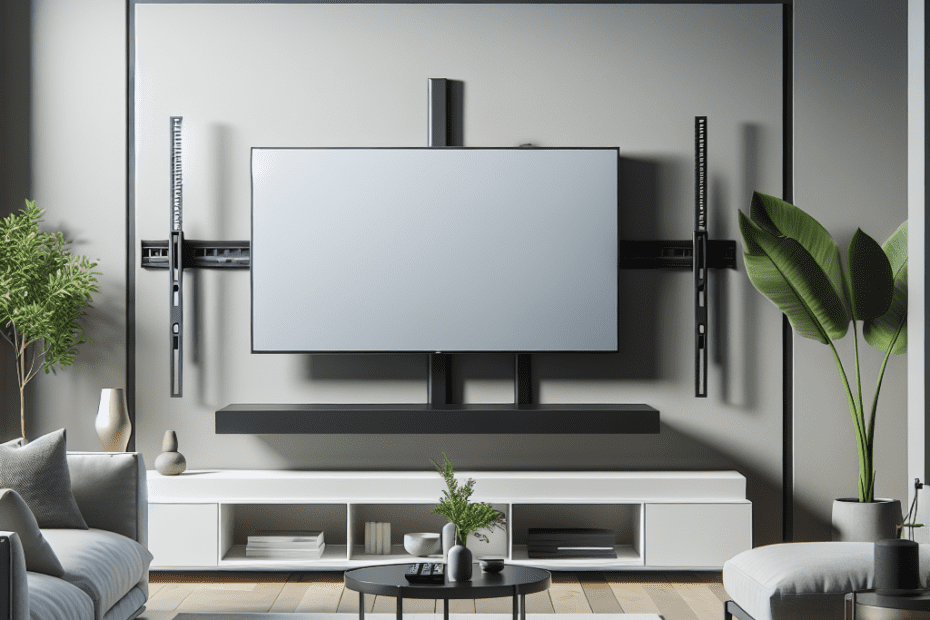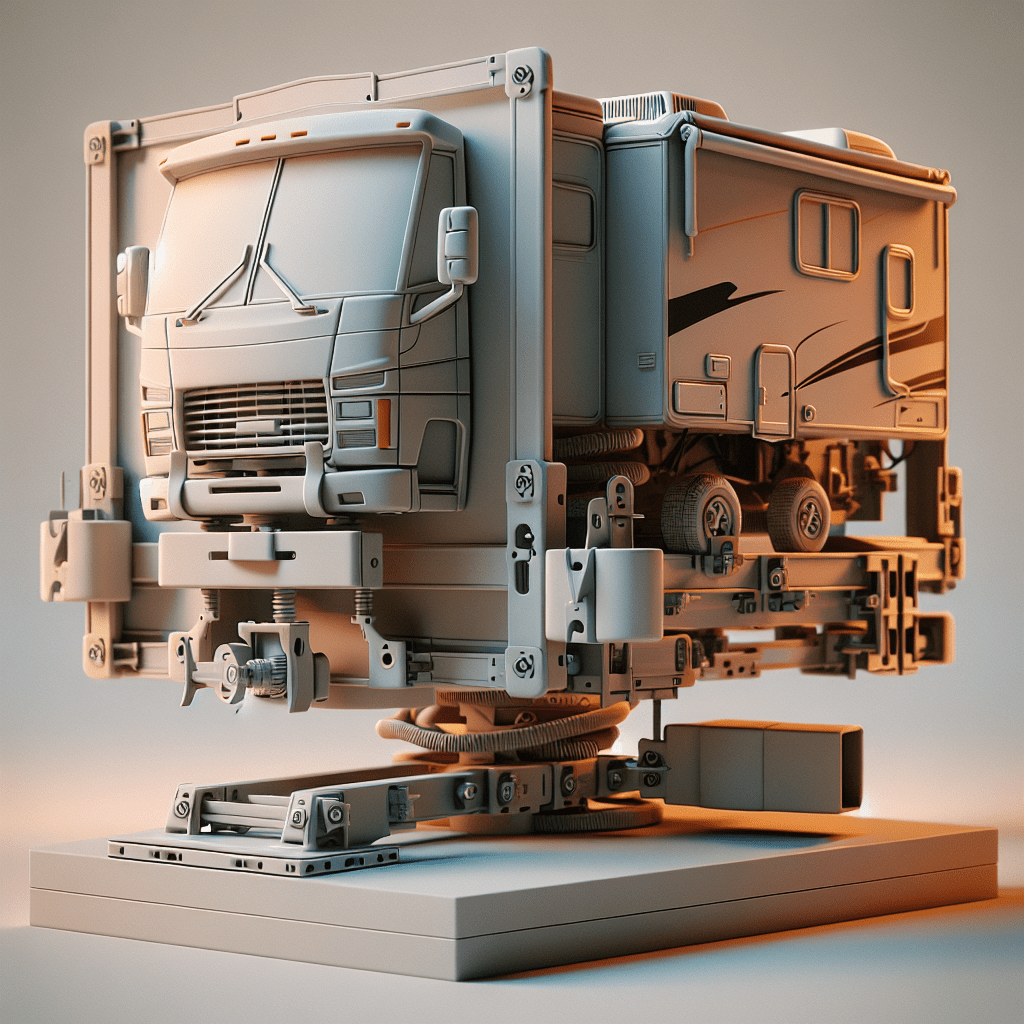TV Wall Mount Basics
When it comes to mounting your TV on the wall, understanding the basics is essential. In this section, we will explore the benefits of TV wall mounts and the different types available.
Benefits of TV Wall Mounts
Mounting your TV on the wall offers several advantages. Here are some key benefits to consider:
-
Space-saving: Wall-mounted TVs can help save space in small rooms and provide a sleek, modern look (Source). By eliminating the need for a TV stand or entertainment center, you can free up valuable floor space and create a more open and organized living area.
-
Optimal viewing angles: Wall mounting allows for better viewing angles, as the TV can be adjusted for optimal height and can be tilted or swiveled to reduce glare (Hellotech). This ensures a comfortable and enjoyable viewing experience from various seating positions in the room.
-
Enhanced aesthetics: Wall-mounted TVs can create a modern and organized living space, whether it’s for a home theater setup or a simple TV wall mount (Source). With no visible cables or bulky furniture, your room can have a clean and minimalist look.
-
Versatility: Wall mounts offer flexibility in positioning your TV. You can mount it at eye level when seated for optimal viewing comfort (Source). Additionally, some mounts allow you to tilt, swivel, or extend the TV to achieve the perfect viewing angle for different occasions.
Types of TV Wall Mounts
There are various types of TV wall mounts to choose from, each designed to cater to different needs and preferences. Here are the three primary types:
-
Fixed TV Wall Mounts: Fixed mounts, also known as low-profile mounts, securely hold the TV close to the wall. These mounts offer a sleek and flush look, ideal for rooms where the TV needs to be positioned at eye level and glare is not a major concern. Fixed mounts are the simplest and most affordable option, providing stability and a seamless appearance.
-
Tilting TV Wall Mounts: Tilting mounts allow you to adjust the vertical angle of the TV screen, providing a better viewing experience (Source). This feature is particularly useful when mounting the TV above eye level, such as in bedrooms or higher on the wall. Tilting mounts allow you to tilt the TV downwards, ensuring a comfortable viewing angle.
-
Full-Motion TV Wall Mounts: Full-motion mounts, also known as articulating mounts, offer the most flexibility. These mounts allow you to extend, tilt, and swivel the TV in multiple directions. Full-motion mounts are perfect for rooms where you need to adjust the TV’s position to accommodate different seating arrangements or to reduce glare from windows or lights. With full-motion mounts, you can enjoy optimal viewing angles from anywhere in the room.
Choosing the right type of TV wall mount depends on factors such as the room layout, seating arrangement, and personal preferences. Consider the functionality, aesthetics, and viewing needs when selecting the ideal mount for your TV.
Choosing the Right TV Wall Mount
When it comes to securely mounting your TV on the wall, choosing the right TV wall mount is essential. There are a few key considerations to keep in mind: the size and weight of your TV, as well as the VESA pattern.
Considerations for TV Size and Weight
Before selecting a TV wall mount, it’s important to determine the size and weight of your TV. Different mounts have different weight capacity and size requirements, so choosing one that is compatible with your TV model is crucial for safety and stability.
To determine the weight of your TV, refer to the manufacturer’s specifications or check the user manual. This information will help you select a wall mount that can adequately support the weight of your TV. It’s important to note that the weight indicated includes the TV and any additional accessories attached to it.
In terms of TV size, consider the diagonal measurement of the screen. Most TV wall mounts have a recommended range of screen sizes they can accommodate. Ensure that your TV falls within this range to ensure a proper fit.
Understanding VESA Patterns
The VESA pattern is another important factor to consider when choosing a TV wall mount. The VESA pattern refers to the standardized mounting hole pattern found on the back of the TV. It consists of four holes arranged in a square or rectangular pattern.
The VESA pattern is measured in millimeters and is denoted by two numbers indicating the horizontal and vertical distance between the holes. The most common VESA patterns are 100×100, 200×200, and 400×400, but there are many other sizes available.
To determine the VESA pattern of your TV, you can refer to the user manual or look for the information online. It’s crucial to choose a wall mount that is compatible with your TV’s VESA pattern to ensure a secure and proper fit.
When selecting a TV wall mount, make sure to check the weight and size specifications, as well as the VESA pattern compatibility. This information will help you choose a mount that is suitable for your specific TV model. For more information on TV wall mounting, check out our article on tv wall mounting.
By considering the size and weight of your TV, as well as the VESA pattern compatibility, you can confidently choose a TV wall mount that provides secure and stable support for your television. Ensure a seamless and enjoyable viewing experience by selecting the right TV wall mount for your needs.
Different Types of TV Wall Mounts
When it comes to mounting your TV on the wall, it’s essential to choose the right type of TV wall mount that suits your needs. There are three main types of TV wall mounts: fixed mounts, tilting mounts, and full-motion mounts. Each type offers different features and benefits, allowing you to find the perfect solution for your space.
Fixed TV Wall Mounts
Fixed mounts are the most basic type of TV wall mount. They provide a low-profile installation, keeping your TV close to the wall for a sleek and streamlined look. Once the TV is mounted, fixed mounts do not allow for any movement or adjustment. This type of mount is ideal if you have a designated viewing area and don’t require any flexibility in adjusting the TV position. Fixed mounts are also a popular choice for mounting TVs in commercial settings or public spaces.
Tilting TV Wall Mounts
Tilting mounts offer a step up from fixed mounts by providing the ability to adjust the vertical tilt of the TV screen. This allows you to tilt the TV up or down, accommodating different viewing angles and reducing glare or reflections. Tilting mounts are particularly useful if you plan to mount your TV higher on the wall or if you have windows or lights that may cause unwanted reflections on the screen. By adjusting the tilt, you can optimize the viewing experience and ensure a comfortable position for everyone in the room.
Full-Motion TV Wall Mounts
For the ultimate flexibility in TV positioning, full-motion mounts are the way to go. Also known as articulating mounts, these mounts offer a wide range of motion and adjustment options. With a full-motion mount, you can not only tilt the TV vertically but also swivel it horizontally and even extend it away from the wall. This allows you to find the perfect viewing angle from any seat in the room. Full-motion mounts are especially beneficial if you have a large living space or if you want to be able to adjust the TV position for different viewing scenarios.
It’s important to note that the choice of TV wall mount should depend on various factors, including the size and weight of your TV, the layout of the room, and your specific viewing preferences. Before making a decision, it’s recommended to consult the manufacturer’s guidelines and ensure that the chosen mount is compatible with your TV model. For a comprehensive guide on TV wall mount installation and setup, refer to our article on tv mount installation.
By understanding the different types of TV wall mounts available, you can select the one that best suits your needs and enhances your viewing experience. Whether you prefer the simplicity of a fixed mount, the adjustability of a tilting mount, or the versatility of a full-motion mount, securely mounting your TV on the wall will elevate your home entertainment setup and provide a clean and organized look to your living space.
Installation and Setup
Installing a TV wall mount and securely mounting your TV on the wall requires careful preparation and precision. By following the proper steps, you can ensure a safe and successful installation. This section will guide you through the process, starting from preparation to adjusting and fine-tuning the TV position.
Preparing for Installation
Before you begin the installation process, it’s important to gather the necessary tools and materials. Here’s a list of items you may need:
- TV wall mount kit, including brackets, screws, and any necessary hardware
- Stud finder
- Level
- Screwdriver or drill with appropriate bits
- Measuring tape
- Pencil
- Safety goggles
Once you have all the required tools and materials, you can proceed with the installation.
Step-by-Step Installation Guide
-
Determine the ideal height and location for your TV. Consider factors such as viewing angle, distance from seating area, and potential glare from windows or lights.
-
Use a stud finder to locate the wall studs. Mounting your TV on wall studs provides maximum stability. Mark the stud locations with a pencil.
-
Attach the mounting brackets to the back of your TV following the manufacturer’s instructions. Make sure to align the brackets with the VESA pattern on the TV. The VESA pattern is a standardized mounting hole pattern found on the back of the TV. Consult your TV’s manual or the manufacturer’s website to determine the VESA pattern for your specific model.
-
Hold the TV wall mount against the wall, ensuring that it aligns with the marked stud locations. Use a level to ensure the mount is straight.
-
Using a drill or screwdriver, secure the mount to the wall by driving screws through the mounting holes and into the wall studs. Follow the specific instructions provided with your TV wall mount kit.
-
Carefully lift the TV and gently place it onto the mounted brackets. Make sure the TV is securely attached to the mount.
-
Double-check that the TV is level and adjust if necessary.
Adjusting and Fine-Tuning the TV Position
After mounting the TV on the wall, you may need to make additional adjustments to achieve the optimal viewing experience. Here are some tips for fine-tuning the TV position:
-
Tilt adjustment: If your TV mount allows for tilt adjustment, you can tilt the TV vertically to optimize the viewing angle. This is especially useful if you need to mount your TV higher up on the wall or if you want to reduce glare from lights or windows.
-
Swivel adjustment: Full-motion TV wall mounts offer swivel capabilities, allowing you to adjust the TV horizontally. This feature enables you to achieve the desired viewing angle from different positions in the room.
-
Cable management: Take the time to organize and conceal cables for a clean and tidy appearance. This can be done using cable management solutions such as adhesive cable clips or cable sleeves.
By following these steps and making necessary adjustments, you can ensure that your TV is securely mounted on the wall and positioned for optimal viewing. Remember, if you are unsure about any aspect of the installation process, it is recommended to seek professional assistance to ensure safety and proper installation.
Now that you have successfully installed and positioned your TV, you can sit back, relax, and enjoy your favorite shows and movies in style.
- Unleash the Potential: Exploring the World of Ceiling TV Mounts - February 15, 2024
- How to Mount a Tv on a Swivel Stand - February 15, 2024
- How to Hang Tv Outside - February 14, 2024


